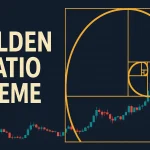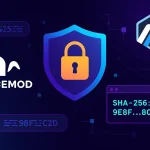Auto Chart Pattern Indicator for Crypto: Guide & Tools
Auto-Chart-Pattern Indicators: Your Trading Wingman for Split-Second Set-ups
Manual pattern chasing can be Zen—until BTC rips off four percent and you are still drawing a pennant. An automated chart-pattern indicator flips that script. It monitors all crypto pairs, flags a triangle the instant it forms, and warns you before the breakout gets costly. What follows is how the tools work, which products stand out, and how to squeeze maximum pip of benefit from automated pattern detection.
Table of Contents
- What Exactly Is an Auto Chart-Pattern Indicator?
- Why Crypto Traders Lean on Automation
- Under the Hood: How Algorithms Spot Shapes
- Performance in the Wild: Accuracy & Latency
- Tool-by-Tool Shoot-out
- Pro Setup Tips & Alert Recipes
- Common Pitfalls (and How to Dodge Them)
- Key Takeaways
- FAQ
1. What Exactly Is an Auto Chart-Pattern Indicator?
Think of it as a pattern-recognition bot living inside your charting platform. TradingView’s built-in pack plots double tops, flags, and wedges the instant price meets its criteria. Trendoscope’s open-source script takes it further—over a dozen classical formations and stats on each hit rate. The output is both visual (overlayed lines) and data-rich (pattern age, target, invalidation level). With that combination, you can assess a setup at a glance and decide whether to trade or pass.
2. Why Crypto Traders Lean on Automation
Crypto never sleeps; your eyes need to. An indicator that runs 24/7 closes that gap. On average, a BTC breakout travels about 1.8 percent during the first fifteen minutes—react late and the move is half-gone. Automation also unlocks scale. Instead of babysitting one chart, you monitor fifty, each with its own alert funneling to Telegram or a trading bot.
3. Under the Hood: How Algorithms Spot Shapes
Most scripts follow three steps:
- Zig-zag preprocessing—removes micro-noise, leaving swing highs and lows.
- Rule engine—imposes ratios or angle checks (e.g., trend-line convergence for triangles).
- Validation layer—confirms a setup with volume or candle closes to remove false positives.
TrendSpider even discloses those settings so you can tighten an angle tolerance of a triangle or demand more volume. Meanwhile, AI-powered scanners such as altFINS convert price bars to images and input them into convolutional nets, promoting up to 78 percent backtest accuracy for 26 patterns.
4. Performance in the Wild: Accuracy & Latency
Accuracy is anything but ubiquitous. Trendoscope uploads hit-rate tables—contracting triangles on the BTC four-hour chart reach profit targets a little over 60 percent of the time. TradingView’s native suite is tight-lipped about figures but draws patterns server-side, shaving valuable milliseconds. Third-party testers show LuxAlgo’s harmonic detector marking a completed Three-Drives setup within one candle close, a big win when meme-coins can move five percent in under ten minutes.
5. Tool-by-Tool Shoot-out
| Platform / Script | Stand-out Feature | Best Use-Case | Caveat |
|---|---|---|---|
| TradingView Auto Chart Patterns | Native, free, multi-pattern pack | Beginners; quick visual back-tests | No success-rate stats |
| Trendoscope Ultimate Patterns | Open-source code, stats dashboard | Data-driven traders | Premium tier unlocks full library |
| altFINS AI Scanner | AI engine with 78 % hit rate | Multi-time-frame crypto swing trades | Runs on a web platform, not chart overlay |
| TrendSpider Auto Recognition | Custom rule tweaking | Equity + crypto desks needing precision | Paid only |
| LuxAlgo Pattern Detectors | Harmonics & rarer structures | Early reversal spotting | Signals can repaint on low time frames |
6. Pro Setup Tips & Alert Recipes
- Filter by volume: fire alerts only when breakout volume exceeds 150 percent of the 20-bar average—noise on low-cap tokens drops instantly.
- Stack confluence: pair pattern alerts with on-chain metrics (Nansen smart-money inflows) for stronger conviction.
- Throttle notifications: if you’re getting 40 patterns a day, tighten rules until the feed calms down.
- Webhook everything: TrendSpider and TradingView can push JSON payloads straight to a Lambda function for automated order entry.
7. Common Pitfalls (and How to Dodge Them)
- Signal overuse – trade every alert and you’ll churn your account. Back-test each structure; flags often fail during high-volatility news candles.
- Repaint risk – some scripts redraw levels when price invalidates a setup. Choose libraries that lock points once printed.
- Latency illusion – fast overlays can still be behind exchange APIs. Verify timing before letting bots trade.
- One-size settings – a triangle that works on BTC’s four-hour chart can be trash on a two-minute meme-coin. Optimize rules pair-by-pair.
8. Key Takeaways
- Auto pattern indicators reduce reaction time and increase your watch-list from one chart to hundreds.
- Accuracy varies—study each tool’s own statistics rather than generic “70 percent” promises.
- A 24/7 market makes latency and alert routing extremely critical; test setups well in advance of handing control to a bot.
- Combine patterns with volume, on-chain intel, and sensible risk to turn flashy overlays into real profit.
FAQ
Do auto chart-pattern indicators work on all crypto pairs?
They work on any pair that your charting platform does, but accuracy diminishes on thin-liquidity tokens because random spikes look like false breakouts. Back-test each pair before live trading.
Will the indicator place trades for me?
On the majority of platforms the script only sends alerts. For automated entries you’ll require a webhook to your exchange or a trading bot that monitors for those alerts.
How do I avoid being spammed with alerts during the night?
Add a time filter (e.g., 06:00–22:00 UTC), add volume or volatility requirements, and throttle pattern size so only mature formations send alerts.
Post created by Robert AI Team



